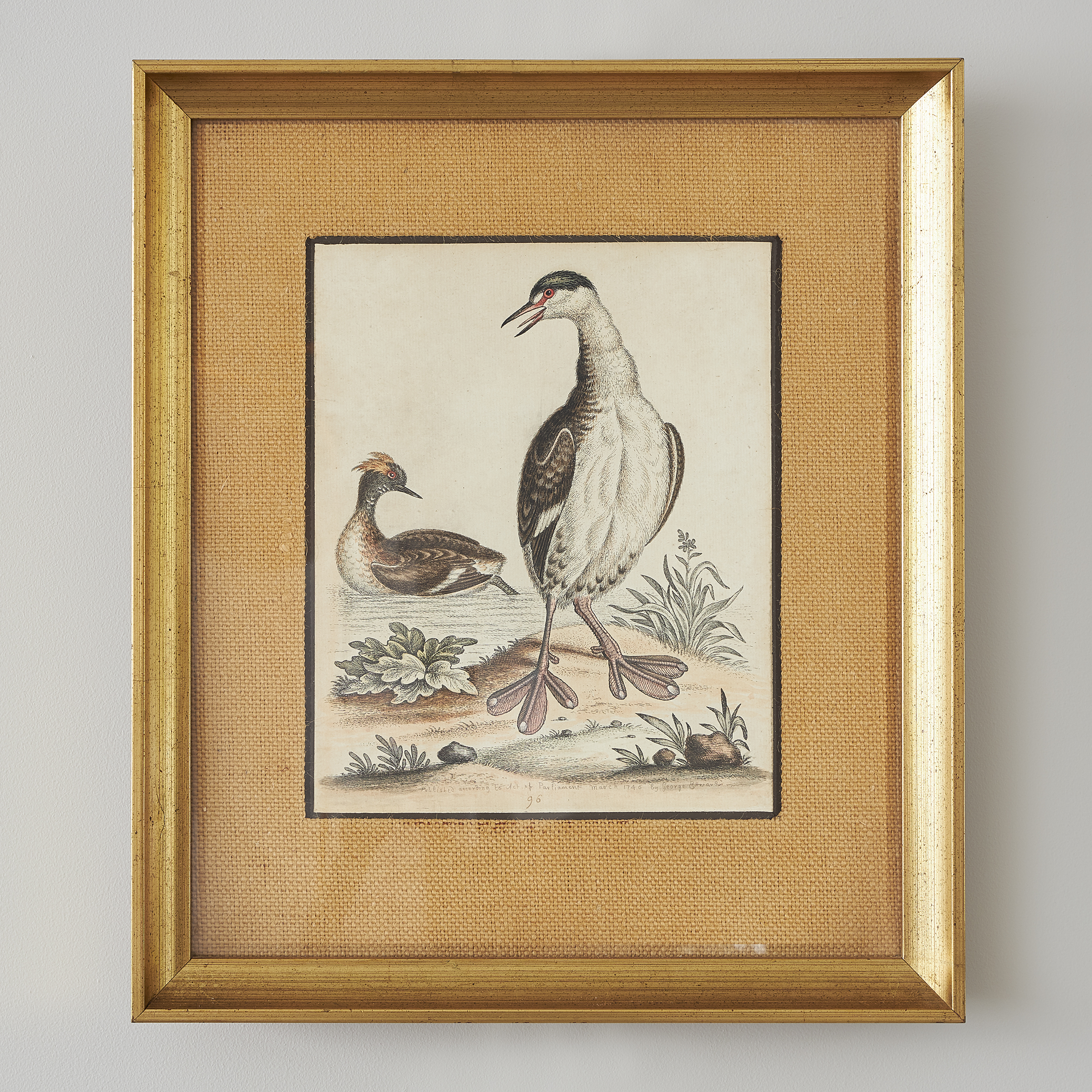More about this product
In later hessian-mounted, gilt wood frames.
George Edwards published the first volume of “Natural History” in 1743, with the subsequent three volumes in 1747, 1750 and 1751. Together with his second book, ‘Gleanings of Natural History’ (published 1st vol. 1758, 2nd vol. 1760) he is considered the father of British Ornithology.
Among Edwards' first patrons was Sir Hans Sloane; he was taught to etch by the celebrated Mark Catesby (in 1754 he would publish the second edition of Catesby's "Natural History"); and he worked with the Bartrams of Philadelphia and Linnaeus in Sweden.
Bibliographically Edwards' "A Natural History" is complicated. A large number of possible variants exist, but what is certain is that it was hugely successful and went through a number of transformations whilst under Edwards' control, including the issuing of a French edition of the text. Shortly after he retired in 1769, he sold "to Mr. James Robson, Bookseller, all remaining copies of my "Natural History" coloured under my immediate inspection, together with all my copper-plates, letter-press, and every article in my possession relative to it and, that my labours may be handed down to posterity with integrity, truth and exactness, I have delivered into his hands a complete set of plates, highly coloured by myself, as a standard to those Artists who may be employed in colouring them for the future" (George Edwards, declaration quoted in Robson's Some Memoirs of George Edwards, dated May 1st, 1769). Robson continued to issue sets, again with various changes, and a final edition appeared in 1802-1806, published by W. Gardiner and Messrs. Robinson.





